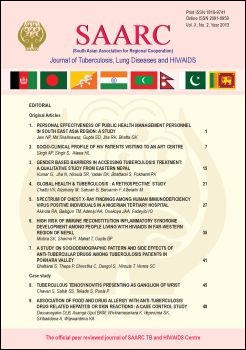Personal Effectiveness Of Public Health Management Personnel In South East Asia Region: A Study
DOI:
https://doi.org/10.3126/saarctb.v10i2.9706Keywords:
Health Management Personnel, Norms, Personal Effectiveness, South East Asia Region,Abstract
Introduction: Personal Effectiveness is being the best to oneself by mobilizing motivation and galvanizing cognitive capability in order to address the demand of a given situation. The objectives of the study were: i) to calculate the personal effectiveness scores under the three categories: self-disclosure, openness to feedback, and perceptiveness, ii) to determine the type of personal effectiveness and which dimension of personal effectiveness is lacking among the health personnel mostly. ii) to develop personal effectiveness norms for public health management personnel in South East Asia region under the categories of self-disclosure, openness to feedback and perceptiveness.
Methodology: Personal Effectiveness (PE) scale developed by Prof Udai Pareek was administered on 74 public health management personnel, who attended various leadership and management training programmes during 2009-2012, in South East Asia Region (SEAR). Using 10 as “cut-off” for high or low scores, combining the three dimensions of personal effectiveness the respondents were categorized in to eight categories, ranging from effective to ineffective.
Results: More than three-fourths of the public health management personnel in SEAR were found to be ‘high’ on openness to receiving feedback followed by three-fifths who have ‘high’ perceptiveness. However, less than one-half have ‘high’ self-disclosure. The compositions of the three dimensions of personal effectiveness of all the respondents suggested that about one-fourth were ‘effective’. Nearly one-third of the respondents were found to be ‘secretive”. One out of every ten respondents was found to be “ineffective”.
Conclusion: The public health management personnel need to work upon enhancing their personal effectiveness by sharing and becoming sensitive to others.
SAARC Journal of Tuberculosis, Lung Diseases & HIV/AIDS; 2013; X(2); 1-6
Downloads
Downloads
Published
How to Cite
Issue
Section
License
Copyright © SAARC Tuberculosis and HIV/AIDS Centre (STAC), all rights reserved, no part of this publication may be reproduced, stored in a retrieval system or transmitted in any form or by any means without prior permission of the STAC.





